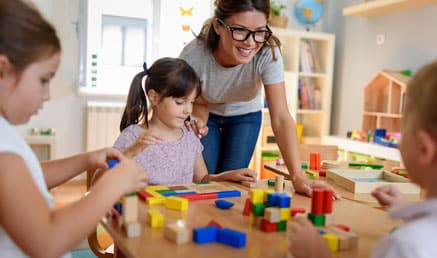
“It’s our polite nudge in the ribs to help you and your team stay organised and on task.”
This week’s subject is Child directed learning.
Element 1.2.3: Each child’s agency is promoted, enabling them to make choices and decisions that influence events and their world.
What range of intentional strategies do educators use to foster child-directed learning across the educational program and service delivery?
Child directed learning is a crucial pedagogical practice that respects and nurtures the individuality of each child. By prioritising children’s interests, fostering active engagement, and promoting autonomy, educators can create enriching and meaningful learning experiences and environments. This approach not only enhances children’s cognitive and social development but also instils a lifelong love for learning.
Educators use their knowledge of children’s interests, needs and abilities to set up the environment and provide resources that spark interest and inspire exploration. They foster child directed learning by empowering children to make decisions about, plan for and be involved in the set-up of their own play experiences and projects. By providing children with choices in their learning activities, it empowers them and fosters their independence. Educators recognise that autonomy in learning fosters children’s decision-making skills and confidence.
Strategies for facilitating child directed learning:
-
- Set up the environment with children’s individual interests in mind. Include a variety of materials and resources that spark interest, are open ended and stimulating
- Request children’s input when planning the set-up of the physical environment
- Provide a range of age-appropriate, open-ended resources within the indoor and outdoor play spaces
- Allow opportunities for exploration of the natural environment
- Use your knowledge of children’s interests to create situations and experiences that inspire children’s play, exploration and learning
- Respond to children’s ideas and suggestions and provide them with the space and resources to extend on their play and learning through follow up experiences or long-term projects
- Allow the program and routines to be flexible, allowing children to direct their play and learning experiences away from planned experiences, when required
- Provide extended periods of uninterrupted time and space for child initiated and child directed play
- Support, stimulate and scaffold children’s emerging skills
- Identify and respond to children’s individual needs and provide additional support where required
- Include children’s input when program planning and evaluating experiences
- Educators are intentional and identify opportunities to scaffold learning by the use of open-ended questioning to extend discussions and challenge children’s thinking.
Resources:
Supporting Agency: Involving Children in Decision-Making
Guide to the NQF- Child directed learning
Children’s sense of agency fostered through self-directed play, inspiring rich learning
Intentionality through the physical environment
Within System7 go to Quality Area 1/Module 6 to submit self-assessment notes and if required, open a QIP issue if you identify any areas of improvement.
The Childcare Centre Desktop has a range of resources to assist services with physical environment. These include risk assessment and safety check templates and much more.
Resources, NQS Element, Regulation and System7 links:
Childcare Centre Desktop – Childcare Centre Desktop
National Quality Standard – QA 1/ 1.2.3- Child directed learning
National Regulations – 73, 74, 155, 156
System7 Module – QA 1/ Module 6
If you have any questions send us a note via the Contact page here!




